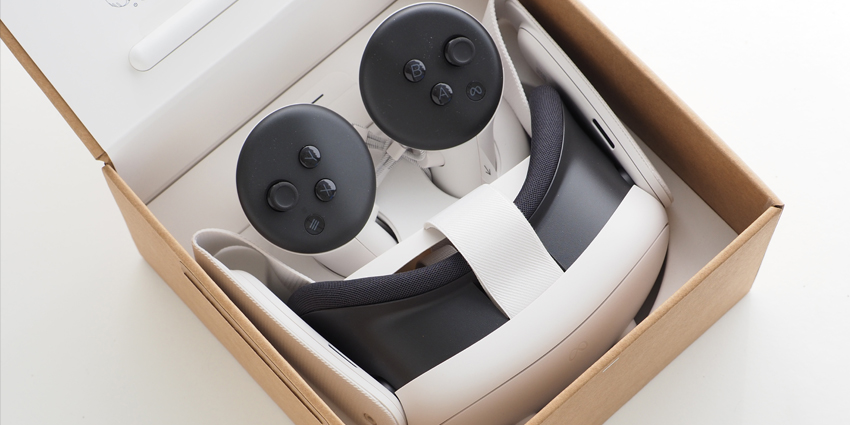Figuring out how to effectively compare VR headsets in 2024 can be complex.
As immersive technology continues to evolve and adoption grows in the enterprise environment, today’s business leaders have countless options to choose from. At the same time, the number of VR headset vendors is increasing as innovators strive to find a place in this lucrative market.
Bringing the right virtual reality headset technology into your business can be an incredible way to improve productivity and efficiency, enhance customer and employee experience, and turbocharge collaboration. The challenge is in figuring out which solution is right for you.
Here are the steps you should consider when you compare VR headsets in 2024.
Step 1: Define your VR Use Cases
Before you begin to compare VR headsets for your team, it’s essential to think carefully about what you want to accomplish with immersive technology. Today’s innovative business leaders use VR headsets for everything from product design and development to customer service.
Some innovative VR vendors are producing headsets specifically designed for specific business environments. There are robust headsets available for companies in the construction and manufacturing landscapes. Plus, you can find tools specifically designed for particular industries, like the aviation or healthcare sector.
At the same time, more affordable headset options are emerging for companies searching for a budget-friendly way to explore VR solutions. Tools like the Meta Quest 3 bring enterprise-quality features to companies using VR for customer support and collaboration without the high price tag.
Don’t forget to check the VR headset you choose can also run the software and applications you need to empower your teams. Some headset vendors have dedicated app stores, while others allow integration with a wide range of software solutions.
Step 2: Explore Evolving Headset Options
In the past, companies that wanted to compare VR headsets typically had a lot of similar options to choose from. Products were split into specific categories, such as tethered headsets connecting to a PC system and standalone or wireless alternatives. While these options still exist today, various other unique systems are emerging for business leaders.
For instance, VR/AR headsets and virtual reality headsets that include mixed reality capabilities, such as the Apple Vision Pro and Meta Quest 3, are becoming increasingly common. If you want to maintain complete control over the level of immersion users have with digital experiences, it might be worth looking at these headset options, too.
It’s also worth considering how users interact with digital content using a VR headset. Not all virtual reality wearables today come with controllers. Some leverage spatial computing features for more organic voice, gesture, and eye control options.
Step 3: Compare VR Headset Visuals
While many factors can influence the quality of a virtual reality experience, from effective tracking to integrations with crucial software, visuals are still essential. After all, the purpose of a VR headset is to replace the real world with a new, virtual environment that engulfs a person’s field of view.
Fortunately, in recent years, vendors have discovered new ways to make visuals crisper, more realistic, and more engaging with pancake optics and new display types. Modern displays can mimic colors and environments more accurately than ever, reducing the risk of VR sickness and enhancing user experiences.
When you compare VR headsets for your team, consider the benefits of different display types, the value of higher resolution per eye, and the opportunities offered by a wider field of view. It’s also worth thinking about refresh rates. Higher refresh rates lead to less lag and image inconsistency, creating a smoother user experience.
Step 4: Don’t Underestimate Comfort
Though vendors in the VR headset landscape are making massive strides towards more comfortable, ergonomic designs, VR sickness is still an issue. The more often you plan on using your virtual reality headsets for collaboration, product development, and training, the more critical comfort will be.
Heavy headsets can lead to issues with neck and shoulder strain. Low-quality visuals can cause eye strain and nausea. With this in mind, make sure you compare VR headsets with a focus on excellent user experiences. Look for devices made with lightweight materials and well-designed straps that help to distribute their weight evenly.
Think about the individual needs of your employees, too. For instance, some VR headsets can feature unique lenses, which help to reduce discomfort for people with prescription eyeglasses. Others can come with customizable face plates and cushioning, accommodating different face sizes.
Step 5: Compare VR Headset Accessories
Speaking of controllers, when choosing virtual reality headsets for your team, it’s worth thinking about the accessories and add-ons that can enhance their experience. As VR headset screens and designs have grown more advanced in recent years, so have the accessories sold with them.
Options range from simple solutions like light shields and additional straps, which improve immersion and minimize VR sickness, to spatial audio systems and sensors. In particular, VR sensors are becoming particularly valuable for controller-free headsets, allowing headsets to track hand and body movements more effectively.
You could even consider investing in haptic gloves and body suits, which deepen the immersive experience for users by using pressure to simulate touch. These haptic accessories are particularly valuable in training scenarios to help build muscle memory and improve knowledge retention.
Compare VR Headsets the Right Way
Learning how to compare VR headsets correctly is becoming increasingly important. Companies from all industries are beginning to embrace immersive technologies to enhance everything from training to collaboration sessions. If you want to unlock the benefits of virtual reality in 2024, ensuring you choose the right headset is a must.
Look beyond budget and cost constraints to consider the impact each potential headset will have on your team and your company’s growth. Remember, you can always consider hiring headsets from specific vendors or experimenting with a handful of different headsets before you make your final choice.








